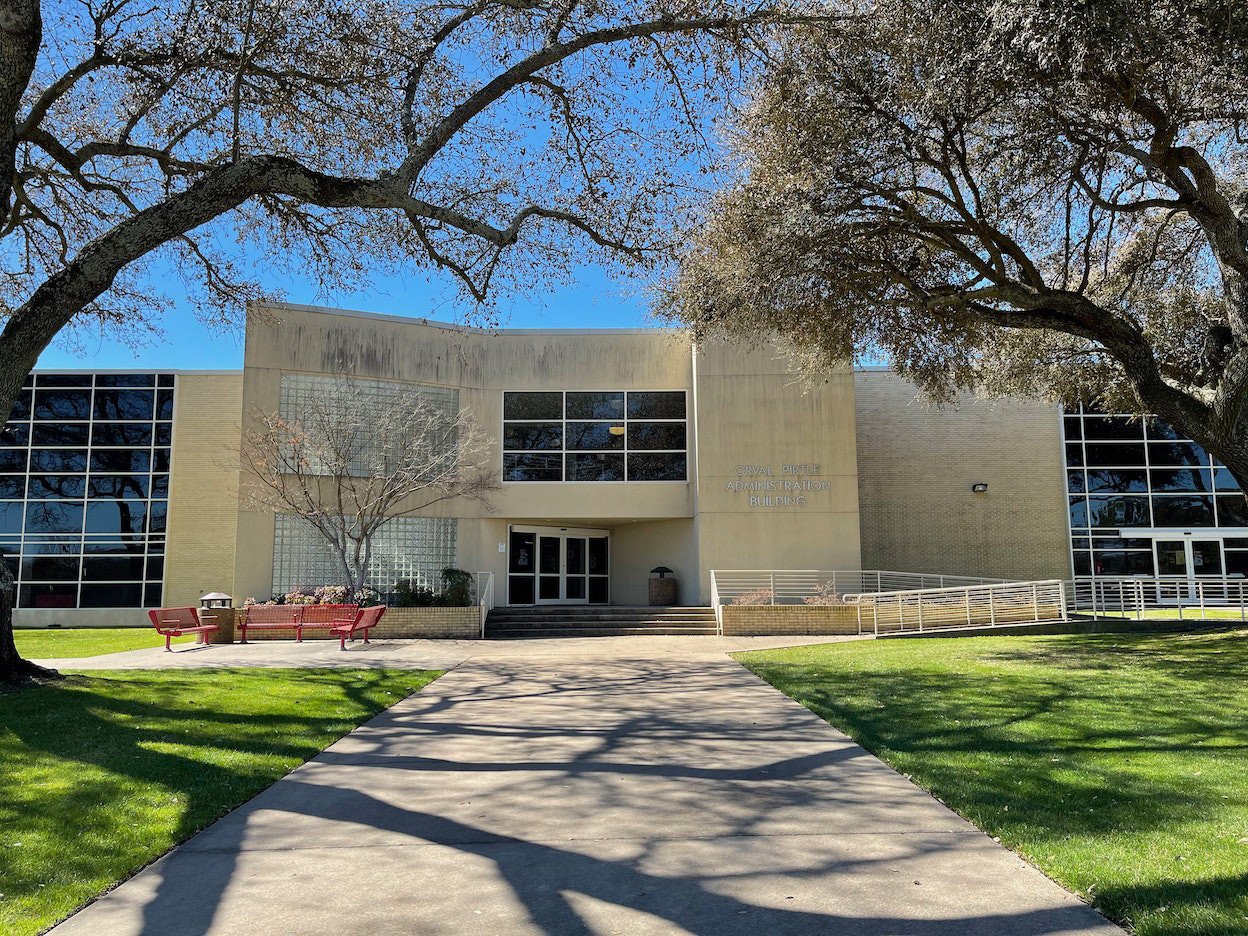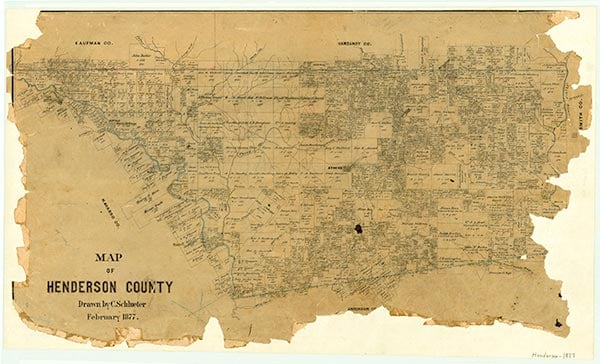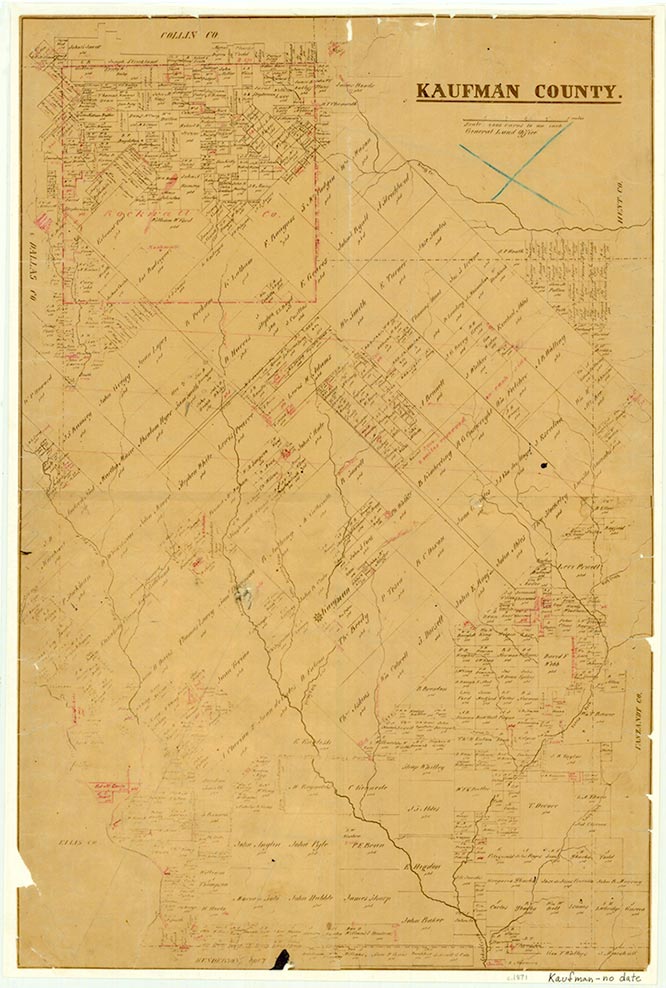Trinity Valley Community College

Trinity Valley Community College, Athens Campus

In 1946 a junior college for Henderson County was begun at Athens, the center where seven paved roads met, when J. P. Pickens and other business leaders enlisted public school men in the cause of further academic and vocational training for county youth. After Orval Pirtle, superintendent at Cross Roads, spoke at communities and gathered signatures on a petition, county and state boards approved a junior college. A county-wide election approved it by 93 percent and selected trustees. This board met in May, chose Pirtle as president, set tuition, and bought buses. Pirtle hired twelve faculty members from across the county, and 256 students enrolled in the summer and 311 in the fall. The Athens school board donated classrooms for the summer, but Henderson County Junior College needed its own campus by fall. The trustees leased Fair Park from the city, bought the Cotton Palace at Fair Park from the public schools, and remodeled the former gym into classrooms. HCJC was built out of war surplus—fourteen buildings, equipment, and furniture. A theater from Camp Howze was converted into an 800-seat auditorium, and former barracks became classrooms, the library, and the cafeteria. Pirtle scavenged well, and bank overdrafts and the GI Bill kept HCJC running. He also built broad area support, sending buses to twenty-eight communities and stressing that high school graduates and veterans needed some college credits when applying for jobs. Pirtle served as president from 1946 to 1971, and the college often struggled along on little money. The election that approved HCJC also passed a local tax, but other critical revenues from state funding and tuition depended on enrollment. In 1947 1,000 students attended HCJC (two-thirds were veterans taking vocational training, who used up their benefits); enrollment declined in the 1950s. In 1962 HCJC had 500 students and a twenty-member faculty. Both had doubled by 1966. Capital projects such as dormitories also doubled the number of buildings. This growth influenced the future in two respects. HCJC now taught classes outside the county, about six each in the public schools in Palestine and Terrell and two more in the Coffield prison unit. Construction was mainly paid for through bank overdrafts and without loans or sufficient bond issues. When T. M. Harvey, president from 1971 to 1978, was appointed, the deficit stood at $500,000. Through belt-tightening and a growth in enrollment from 1,200 to 2,500, the deficit was eliminated. Harvey worked to found a center in Palestine, and K. A. Anderson donated a building, which soon housed a program with 200 students. Meanwhile, Rayford Price, soon to be speaker of the Texas House of Representatives, sponsored a bill to finance the center in Palestine. But Price was defeated in a reelection bid, and Governor Preston Smith pushed through a bill for $1 million on the last night of the session and signed it. Anderson College Center was subsequently built in Palestine on land donated by Mr. and Mrs. Vernon Calhoun.
Classes in Terrell were moved to the Youth Center, which Charles Akin and others had obtained for a minimal lease. Prison classes were also expanded in the belief that educated inmates would be less likely to return to prison. The first HCJC prison graduate was back in jail six months after his release, but later data showed lower recidivism rates for those who had been in college. When the deficit was gone, Harvey got the trustees to construct buildings for the fine arts. He also enlarged the vocational program, established a policy manual and faculty tenure, and improved staff benefits after years of sacrifice. William Campion, who became president in 1978, stressed growth. The junior college district expanded to five counties, the service area to seven. A health occupations program was begun in a new center at Kaufman, and in 1986 a new center was under construction in Terrell, as well as a dormitory in Athens. Classes had begun in area high schools for qualifying seniors. HCJC now had about 260 staff and 4,000 students in centers in Athens, Palestine, Terrell, and Kaufman, as well as in public schools and three prisons. About 5,500 local residents enrolled in classes in continuing education; community service programs reached 10,000 a year, including many senior citizens. The change of the institution's name in 1986 to Trinity Valley Community College reflected better what HCJC had become. Trinity Valley Community College had 150 faculty and 4,759 students for the 1992–93 regular term plus 2,002 for the 1992 summer session and 4,412 in continuing education. In the fall of 2002 enrollment was 5,847, with a faculty of 120. Ronald C. Baugh was president.
William R. Enger | © TSHA

Adapted from the official Handbook of Texas, a state encyclopedia developed by Texas State Historical Association (TSHA). It is an authoritative source of trusted historical records.

- ✅ Adoption Status:
Belongs to
Trinity Valley Community College is part of or belongs to the following places:
Date of Founding Notes
Classes first held in 1946 as Henderson County Junior College; includes campus at Terrell
People
-
President, Dr. Jerry King 2016–2023
-
President, Dr. Jason Morrison 2023–Present
Currently Exists
Yes
Place type
Trinity Valley Community College is classified as a College or University
Tags
External Websites
- Trinity Valley Community College (Official Website)
Fall Faculty Count, 2019 View more »
288
Fall Enrollment Count, 2022 View more »
5,626

